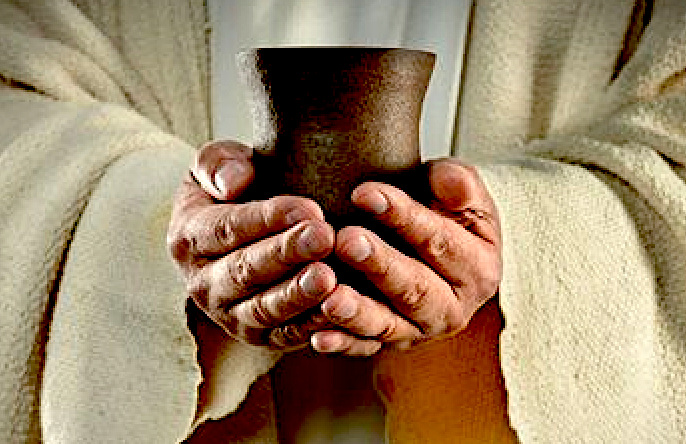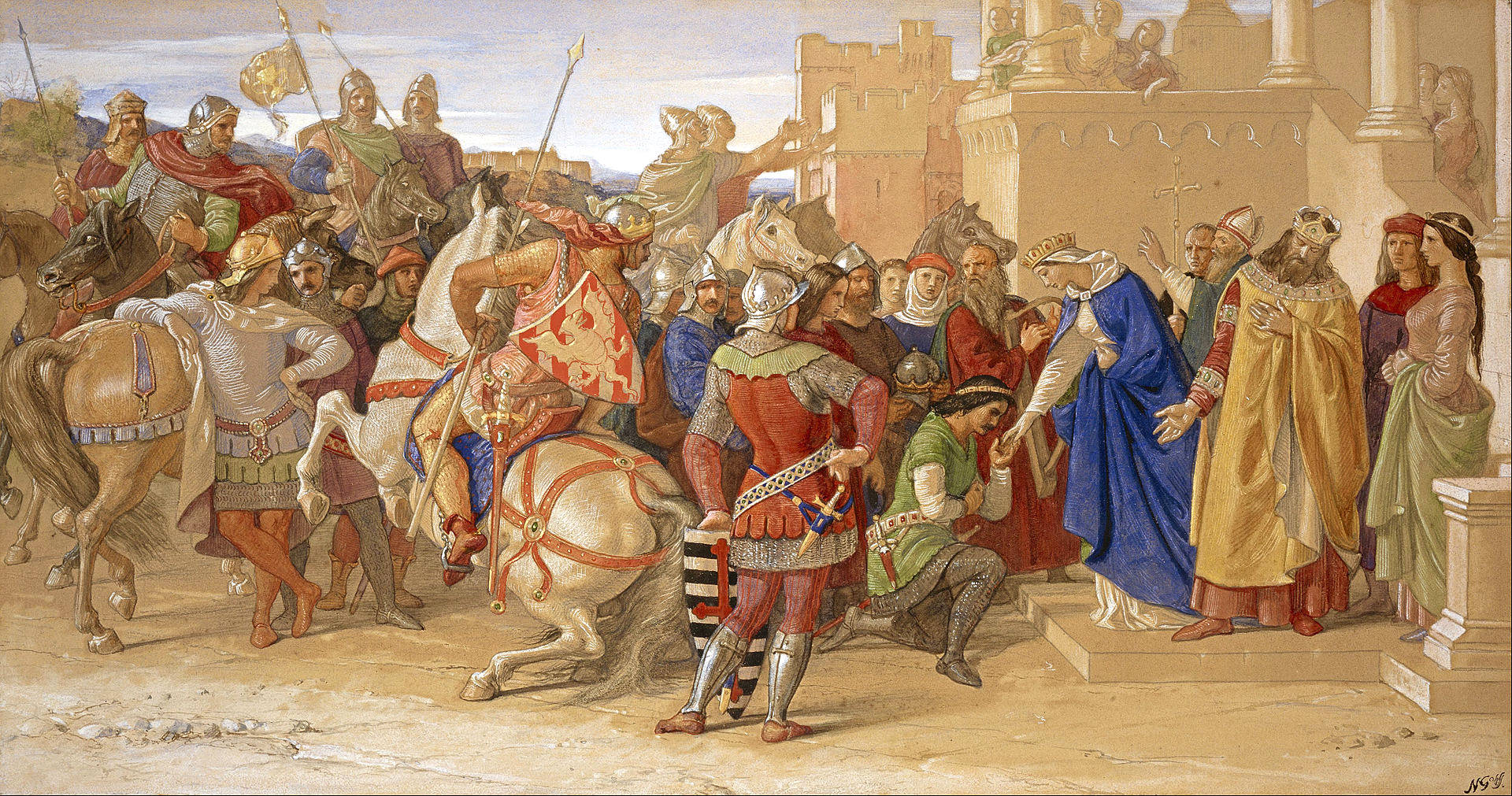
Knights
of the Round Table, depart in their quest to find the Holy Grail
Guinevere (/ˈɡwɪnɪvɪər/ Welsh: Gwenhwyfar pronunciation); Breton: Gwenivar, Cornish: Gwynnever), also often written in Modern English as Guenevere or Guenever, was, according to Arthurian legend, an early-medieval queen of Great Britain and the wife of King Arthur. First mentioned in popular literature in the early 12th century, nearly 700 years after the purported times of Arthur, Guinevere has since been portrayed as everything from a villainous and opportunistic traitor to a fatally flawed but noble and virtuous lady. Many records of the legend also feature the variably recounted story of her abduction and rescue as a major part of the tale.
The earliest datable appearance of Guinevere is in Geoffrey of Monmouth's pseudo-historical British chronicle Historia Regum Britanniae, in which she is seduced by Mordred during his ill-fated rebellion against Arthur. In a later medieval Arthurian romance tradition from France, a prominent story arc is the queen's tragic love affair with her husband's chief knight and trusted friend, Lancelot, indirectly causing the death of Arthur and the downfall of the kingdom. This motif had originally appeared in nascent form in the poem Lancelot prior to its vast expansion in the prose cycle Lancelot-Grail, consequently forming much of the narrative core of Thomas Malory's seminal English compilation Le Morte d'Arthur. Other themes found in Malory and other texts include Guinevere's usual barrenness, the scheme of Guinevere's evil twin to replace her, and the particular hostility displayed towards Guinevere by her sister in law Morgan.
Guinevere has continued to be a popular character featured in numerous adaptations of the legend since the 19th-century Arthurian revival. Many modern authors, usually following or inspired by Malory's telling, typically still show Guinevere in her illicit relationship with Lancelot as defining her character. In much of more recent Arthuriana, however, she assumes much more active roles than in her medieval depictions, increasingly even being cast as protagonist.
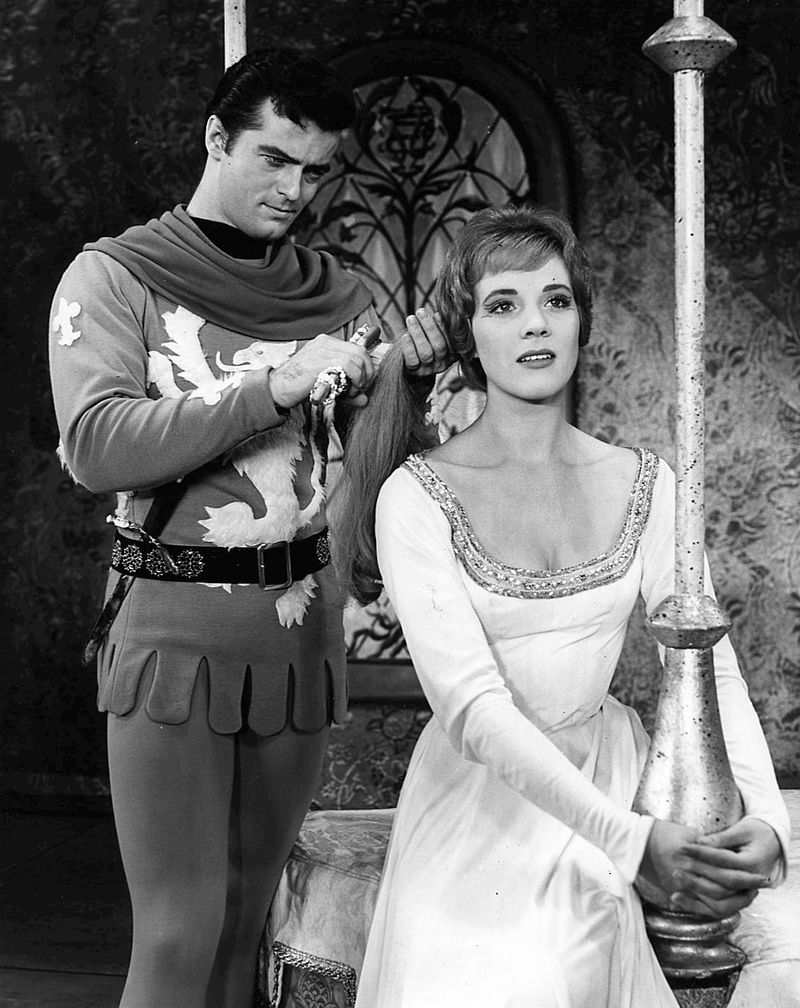
GUINEVERE AND LANCELOT'S HOT LOVE AFFAIR
In the 13th-century French cyclical chivalric romances and the later works based on them, including the influential Le Morte d'Arthur by Thomas Malory, Guinevere is the daughter of King Leodegrance, who had served Arthur's father Uther Pendragon and was entrusted with the Round Table after Uther's death. In these stories, Leodegrance's kingdom typically lies near the Breton city of Carhaise (the modern Carhaix-Plouguer in Brittany, France). In the fields to the south and east of Carhaise, Arthur defends Leodegrance by defeating King Rience, which leads to his first meeting with the young Guinevere. An arranged marriage of state soon commences and Arthur receives the Round Table as Guinevere's dowry. This version of the legend has her betrothed to Arthur early in his career, while he was garnering support and being pressured to produce an heir (which Guinevere, barren as in most other versions, will fail to deliver). Malory has Arthur also ignore
Merlin's prophetic advice warning him not to marry her.
The following narrative is largely based on the Lancelot-Grail (Vulgate) prose cycle, telling the story of Lancelot and Guinevere in accordance to the courtly love conventions still popular in the early 13th-century France (Guinevere's role in this romance is Lancelot's "female lord", just as the Lady of the Lake is his "female
master"), however soon afterwards directly condemned in the Post-Vulgate Cycle retelling that also influenced Malory. When the mysterious White Knight (Lancelot) arrives from the continent, Guinevere is instantly smitten. The teenage Lancelot first joins the Queen's Knights to serve Guinevere after having been knighted by her. Following Lancelot's early rescue of Guinevere from Maleagant (in Le Morte d'Arthur this episode only happens much later on) and his admission into the Round Table, and with the Lady of the Lake's and Galehaut's assistance, the two then begin an escalating romantic affair that in the end will inadvertently lead to Arthur's fall.
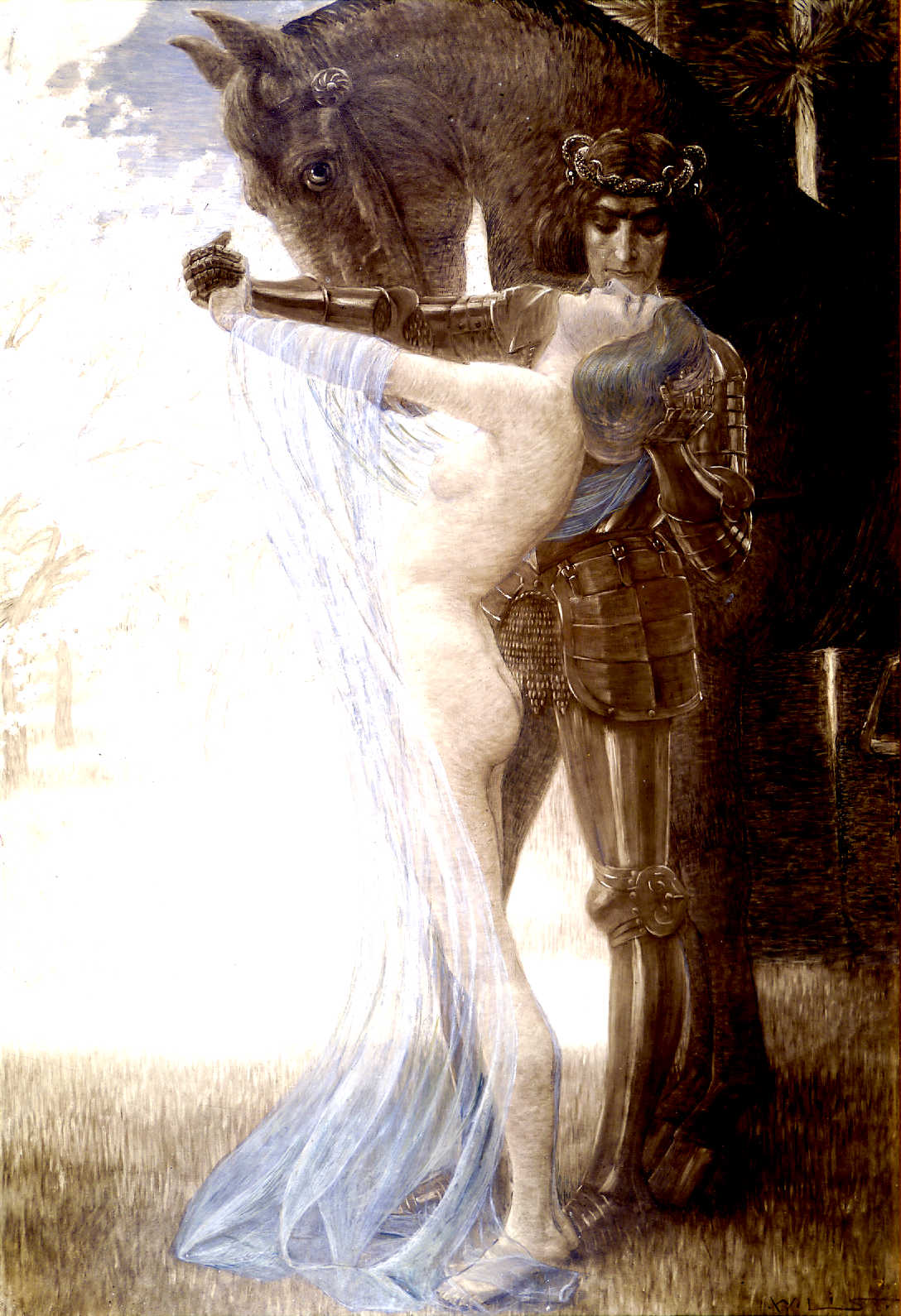
Lancelot refuses the love of many other ladies, dedicates all his heroic deeds to Guinevere's honor, and sends her the redeemable knights he has defeated in battle and who must appeal to her for forgiveness. In the Vulgate Cycle, Lancelot's stepmother Ninianne, the Lady of the Lake gifts them an identical pair of magic rings of protection against enchantements. In this version, the lovers spend their first night together just as Arthur sleeps with the beautiful Saxon princess named Camille or Gamille (an evil enchantress whom he later continues to love even after she betrays and imprisons him, though it was suggested that he was enchanted). Arthur is also further unfaithful during the episode of the "False Guinevere" (who had Arthur drink a love potion to betray Guinevere), her own twin half-sister (born on the same day but from a different mother) whom Arthur takes as his second wife in a very unpopular bigamous move, even refusing to obey the
Pope's order for him not to do it, as Guinevere escapes to live with Lancelot in Galehaut's kingdom of Sorelais.
The French prose cyclical authors thus intended to justify Guinevere and Lancelot's adultery by blackening Arthur's reputation and thus making it acceptable and sympathetic for their medieval courtly French audience. Malory's Le Morte d'Arthur, however, portrays Arthur as absolutely faithful to Guinevere, even successfully resisting the forceful advances of the sorceress Annowre for her sake, except as a victim of a spell in a variant of the "False Guinevere" case. On her side, Guinevere is often greatly jealous for Lancelot, especially in the case of Elaine of Corbenic, when her reaction to learning about their relationship (which, unknown to her, by this time has been limited only to him being raped-by-deceit by Elaine, including an earlier act of the fathering of Galahad) causes Lancelot to fall into his longest period of madness (which only Elaine is able to eventually cure with the power of the Holy Grail itself). Malory is silent regarding Guinevere's feelings for Arthur, but goes so far as to suggest she uses charms or enchantments to win Lancelot's love.
ears later, following the Grail Quest, Malory tells his readers that the pair started behaving carelessly in public, stating that "Launcelot began to resort unto the Queene Guinevere again and forget the promise and the perfection that he made in the Quest... and so they loved together more hotter than they did beforehand." They indulged in "privy draughts together" and behaved in such a way that "many in the court spoke of it." Guinevere is charged with adultery on three occasions, including once when she is also accused of sorcery. Their now not-so secret affair is finally exposed by Guinevere's sworn enemy and Arthur's half-sister, the enchantress Morgan le Fay who had schemed against her on various occasions (sometimes being foiled in that by Lancelot, who had also defended Guinevere on many other occasions and performed assorted feats in her honour), and proven by two of the late King Lot's sons, Agravain and Mordred. Revealed as a betrayer of his king and friend, Lancelot kills several of Arthur's knights and escapes.
Incited to defend honour, Arthur reluctantly sentences his wife to be burned at the stake. Knowing Lancelot and his family would try to stop the execution, the king sends many of his knights to defend the pyre, though Gawain refuses to participate. Lancelot arrives with his kinsmen and followers and rescues the queen. Gawain's unarmed brothers Gaheris and Gareth are killed in the battle (among others, including fellow Knights of the Round Aglovale, Segwarides and Tor, and originally also Gawain's third brother Agravain), sending Gawain into a rage so great that he pressures Arthur into a direct confrontation with Lancelot.
Guinevere later returns to Arthur from Lancelot's castle and is forgiven (Arthur starts to doubt that Guinevere ever betrayed him). When Arthur goes after Lancelot to France, he leaves her in the care of Mordred, who plans to marry the queen himself and take Arthur's throne. While in some versions of the legend (like the Alliterative Morte Arthure, which removed French romantic additions) Guinevere assents to Mordred's proposal, in the tales of Lancelot she hides in the Tower of London, where she withstands Mordred's siege, and later takes refuge in a nun convent. Hearing of the treachery, Arthur returns to Britain and slays Mordred at Camlann, but his wounds are so severe that he is taken to the isle of Avalon by Morgan.
During the civil war, Guinevere is portrayed as a scapegoat for violence without developing her perspective or motivation. However, after Arthur's death, Guinevere retires to a convent in penitence for her infidelity. (Malory was familiar with the Fontevraud daughter house at Nuneaton, and given the royal connections of its sister house at Amesbury, he chose Amesbury Priory as the monastery to which Guinevere retires as "abbas and rular", to find her salvation in a life of penance.) Her contrition is sincere and permanent; Lancelot is unable to sway her to come away with him.
Guinevere meets Lancelot one last time, refusing to kiss him, then returns to the convent. She spends the remainder of her life as an abbess in joyless sorrow contrasting with her earlier merry nature. Following her death, Lancelot buries her next to Arthur's (real or symbolic) grave.
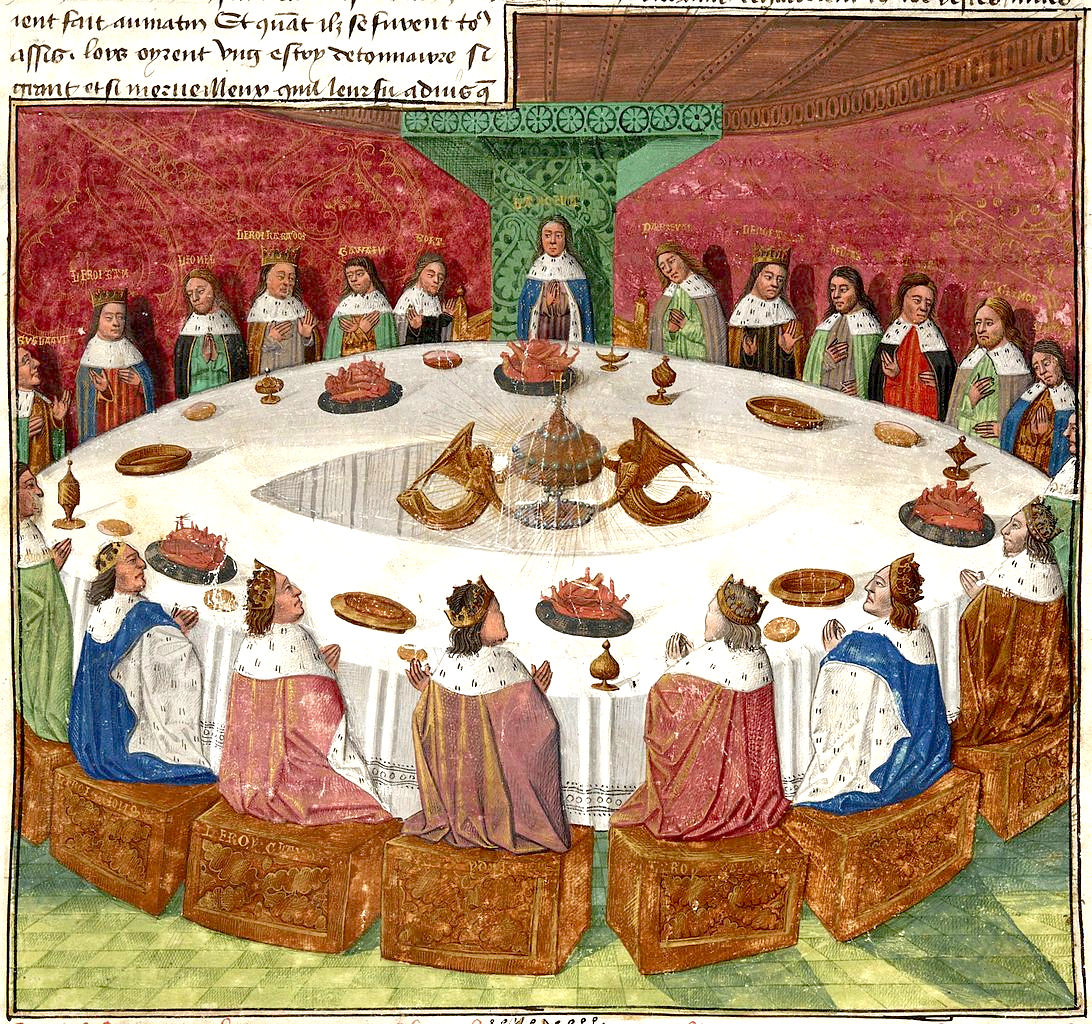
In
the legend of King
Arthur Pendragon, he is famous for his quest to
find the Holy
Grail, Cup of Jesus
Christ, is a search for the divine in all of us.
The Holy Grail has become a central theme in Arthurian literature. Some historians have traced its association with Arthur as far back as some of the earliest legends about him. But the Grail first began to shine as a major Christian symbol in the twelfth and thirteenth centuries.
KNIGHTS OF THE ROUND TABLE
The Knights of the Round Table, are the knights of the fellowship of King Arthur in the literary cycle of the Matter of Britain. First appearing in literature in the mid-12th century, the Knights are an order dedicated to ensuring the peace of Arthur's kingdom following an early warring period, entrusted in later years to undergo a mystical quest for the Holy Grail. The Round Table at which they meet is a symbol of the equality of its members, who range from sovereign royals to minor nobles.
The various stories in the cycle present an assortment of knights from all over Great Britain and abroad, some of whom are even from outside of Europe. Their ranks often include Arthur's close and distant relatives, such as Agravain and Gaheris, as well as his reconciled enemies and those he defeated in battle, including Galehaut and Lot. Several of the most notable knights, including Bedivere, Gawain, Kay and Yvain, are based on older characters associated with Arthur in the Welsh version of the myth. Many knights appear recurrently, such as Gawain, Lancelot, Percival and Tristan, with each of them featuring as a protagonist or eponymous hero in various works of chivalric romance. Other well-known members include the holy knight Galahad, replacing Percival as the achiever of the Grail, and Arthur's traitorous son Mordred.
By the end of Arthurian prose cycles (including the seminal Le Morte d'Arthur), the knights split up into groups of warring factions following the revelation of Lancelot's adultery with King Arthur's wife, Queen Guinevere. In the same tradition, Guinevere is featured with her own personal order of young warriors and knights, known as the Queen's Knights. Some of these romances retell the story of the Knights of the Old Table, led by Arthur's father, Uther Pendragon, whilst other tales focus on the members of the 'Grail Table'; these were the followers of ancient Christian Joseph of Arimathea, with his Grail Table later serving as the inspiration for Uther and Arthur's subsequent Round Tables.
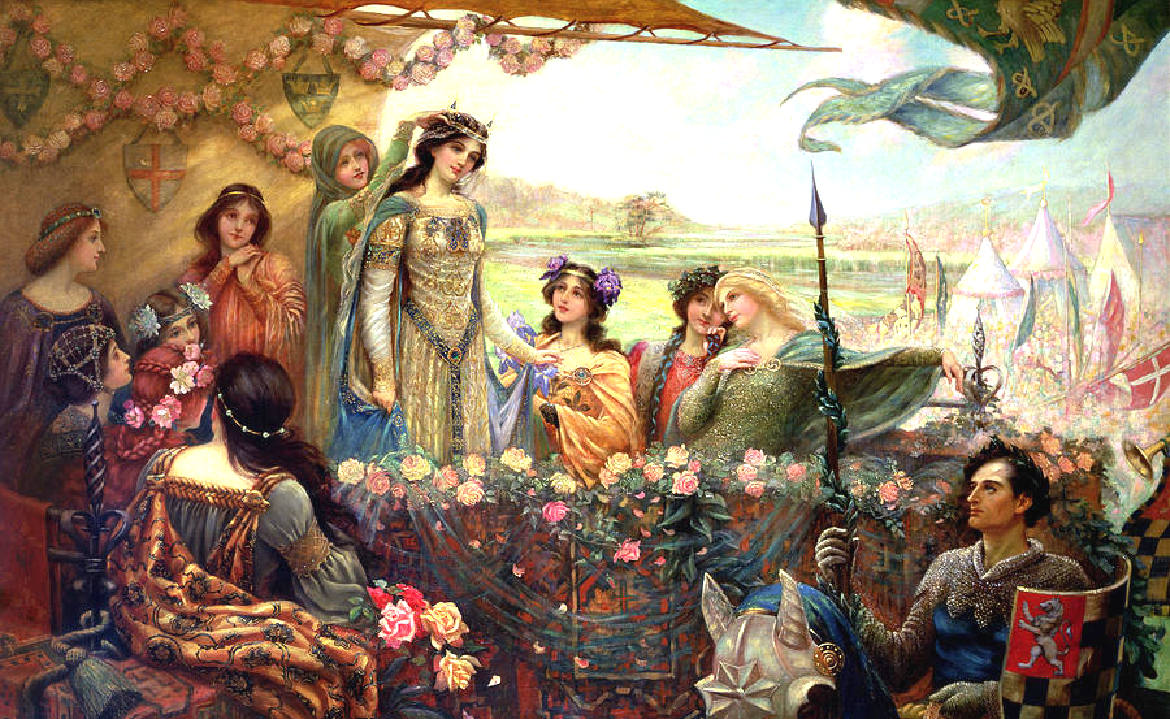
MOST
MENTIONED KNIGHTS OF THE ROUND TABLE A - Z
Sir Agravain
King Arthur
Sir Bedivere
Sir Bors de Ganis
Sir Dagonet
Sir Ector
Sir Gaheris
Sir Galahad
Sir Gareth
Sir Gawain
Sir Geraint
Sir Kay
Sir Lamorak
Sir
Lancelot
Sir
Mordred
Sir Percival
Sir Tristan
